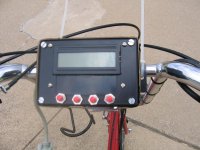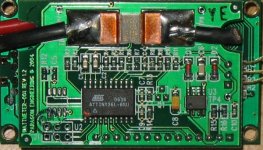That's way cool!
What microcontroller are you using?
Is the throttle graph really throttle or is it current?
I think I'd rather have a bar graph of current.
Is the display backlit? I'm sure they make them somewhere.
Nice video too. Next time add some commentary describing what the buttons do.
What microcontroller are you using?
Is the throttle graph really throttle or is it current?
I think I'd rather have a bar graph of current.
Is the display backlit? I'm sure they make them somewhere.
Nice video too. Next time add some commentary describing what the buttons do.






